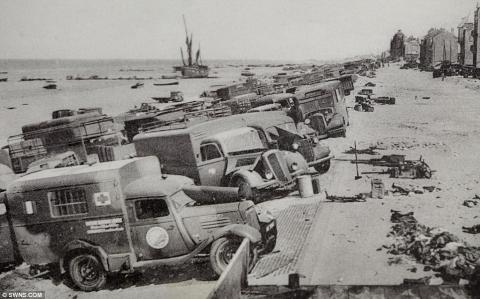New Pictures of Carnage at Dunkirk

A slew of new pictures of the often forgotten dark side of the Dunkirk rescue operation, taken by a German soldier after the battle, provide chilling evidence of the scope of the disaster suffered by Allied forces following the German invasion of Western Europe in May, 1940.
Within ten day of the German invasion, tanks from the 2nd Panzer Division had crossed the Somme River and reached the English Channel at Abbeville, completing the encirclement of approximately 1.7 million British, French, Dutch, and Belgian soldiers in an enormous pocket 120 miles long and 72 miles wide.
For their part, the British desperately assembled all available ships to rescue the BEF. In the meantime, the same German armies that previously traversed the distance from the Ardennes to the English Channel in a few days sat immobilized; for on May 23rd Hitler had ordered another halt with his spearheads only about 10 miles from Dunkirk. Hitler’s reasoning behind halting his rampaging panzer divisions remains heavily debated to this day, though it appears Hitler acted upon advice received from Goring, Keitel, Jodl and Rundstedt. Suffice it to say Hitler, having lacked a clear strategy for dealing with the British since the War had began and, along with many of his senior military commanders, having misunderstood what they really had created in their panzer divisions, misjudged their opponent at Dunkirk. The British rescued approximately 338,226 British and Allied soldiers, granting Britain an enormous psychological boost at her lowest point of the war,and denying the Germans a complete strategic victory to match the astounding operational triumph achieved in the preceding weeks. That said, and despite the successful rescue operation rightfully remembered as a crucial point in the ensuing British ability to remain in the war, nearly all the equipment Britain brought to France sat abandoned on Dunkirk’s beaches or in the French countryside. This massive haul of equipment and armaments included 2,472 artillery pieces, 63,879 vehicles, and hundreds of thousands of tons of ammunition, fuel, and other war material. Thus, what is often forgotten is that though the British had rescued their army - they possessed nothing left with which to equip it.



Post new comment